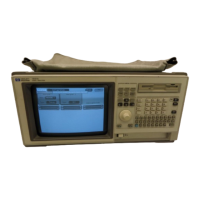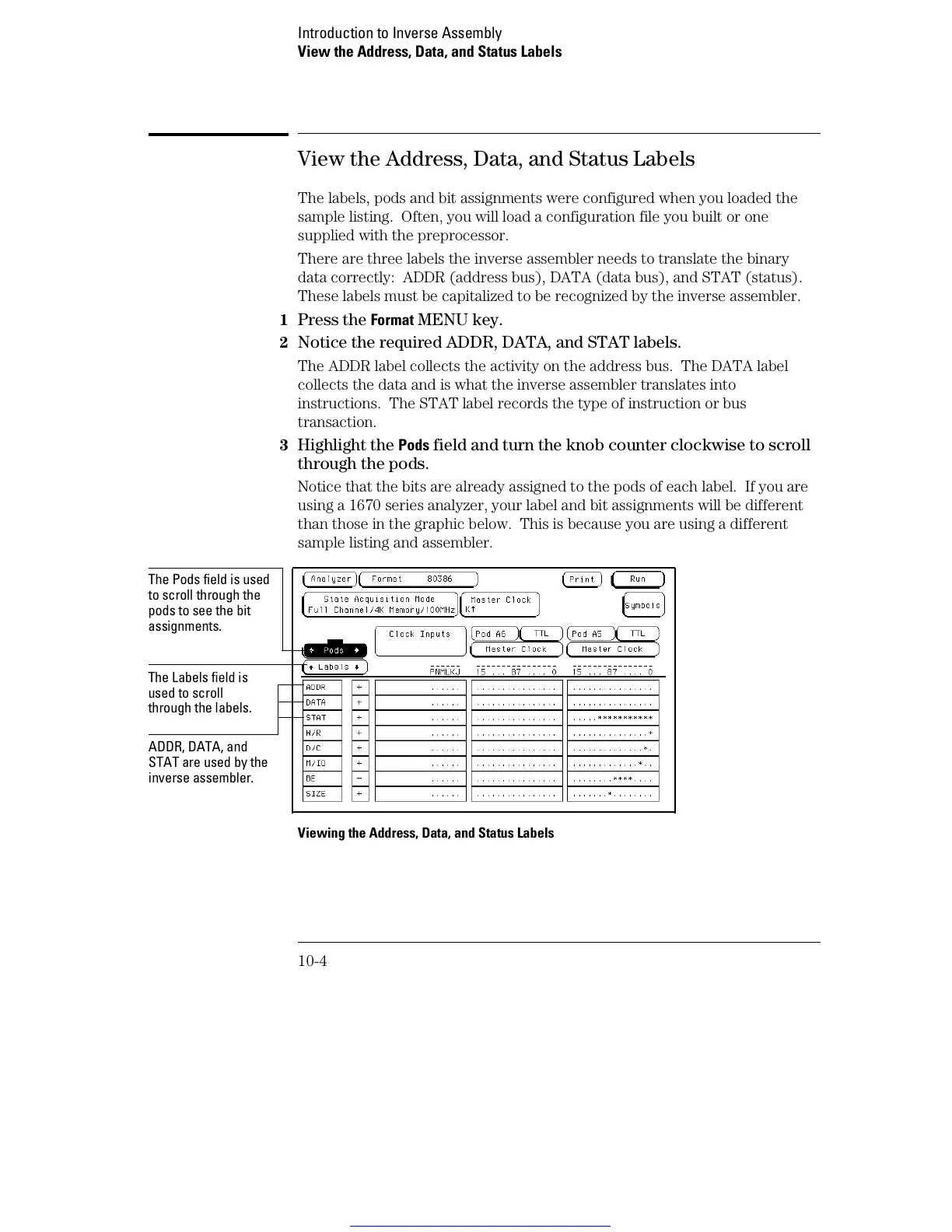View the Address, Data, and Status Labels
The labels, pods and bit assignments were configured when you loaded the
sample listing. Often, you will load a configuration file you built or one
supplied with the preprocessor.
There are three labels the inverse assembler needs to translate the binary
data correctly: ADDR (address bus), DATA (data bus), and STAT (status).
These labels must be capitalized to be recognized by the inverse assembler.
1
Press the Format MENU key.
2 Notice the required ADDR, DATA, and STAT labels.
The ADDR label collects the activity on the address bus. The DATA label
collects the data and is what the inverse assembler translates into
instructions. The STAT label records the type of instruction or bus
transaction.
3
Highlight the Pods field and turn the knob counter clockwise to scroll
through the pods.
Notice that the bits are already assigned to the pods of each label. If you are
using a 1670 series analyzer, your label and bit assignments will be different
than those in the graphic below. This is because you are using a different
sample listing and assembler.
Viewing the Address, Data, and Status Labels
The Pods field is used
to scroll through the
pods to see the bit
assignments.
The Labels field is
used to scroll
through the labels.
ADDR, DATA, and
STAT are used by the
inverse assembler.
Introduction to Inverse Assembly
View the Address, Data, and Status Labels
10-4
Get other manuals https://www.bkmanuals.com

